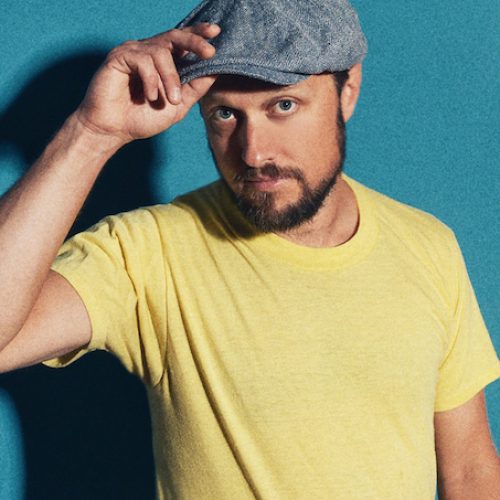I spent more than I meant to on concert tickets this year.
I don’t even want to spend money to buy real groceries most weeks, but, without fail, whenever an artist I love comes to Nashville, I have no problem dropping $30 on a ticket (not to mention $15 on parking). I guess I’ve placed live music in the “more important than decent food” category, and – what’s even worse – I’ve never regretted it.
I think it’s because there’s something soul-refreshing about seeing an artist play their music to you. Whether I’m seeing someone captivate the crowd at a sold-out Ryman show or provide the background music for twenty bar-hoppers they don’t know, live music always seems to carry a weight that studio recordings can’t. Maybe it’s the way a live performance bridges the gap between familiar and new, as you hear songs you’ve heard be played in ways you haven’t. Maybe it’s the aura of a group of people all gathering under the common banner of good music. Or maybe it’s finding out that your favorite singer-songwriter is just as 5’10” and regular looking as you are.
But live shows are so difficult to capture. Trust me, I’ve been the guy annoyingly holding up an iPhone during the best moments of a concert, only to watch them back later and find out the sound quality is like the Snapchat quality of an Android.
And that’s what makes Ryan Montbleau‘s Woodstock Sessions so special. He did it. He captured the feel of a live show and put it on a record.
With help from folk duo Tall Heights, Montbleau played in front of a live audience in a studio, to capture the atmosphere of the concert without compromising sound quality. There’s applause, banter, and room noise on each track, but the songs themselves remain clear and beautiful acoustic versions of Montbleau’s catalog. Listen for yourself to see what I mean, then check out our interview with Ryan below.
And you can check out Ryan’s website here.
How did you start making music?
My father gave me a guitar for Christmas when I was 8, so it sort of started there. But I didn’t really start making it until I went away to college, got depressed and started playing guitar obsessively. I was also writing and then studying poetry, and then when I was 21 I started to sing. Words, guitar, and voice all seemed to come together suddenly and I knew I wanted to make music as I was graduating college.
Who are your influences?
Martin Sexton, Paul Simon, Deb Talan, and many others.
Do you carve out time to write songs, or do you wait for inspiration to strike?
I tend to always have the radar up for whenever some spark of inspiration, however big or small, should arise. So I tend to write little by little, line by line, just about every day but I don’t force it, I just let it come when it comes. Then when it’s time to finish songs for a record I’ll buckle down and put in some hours every day so that I finish things.
How do you write lyrics?
I usually start by make a joyful noise and mumbling out a melody that feels good over something I’m into playing. Then I sketch out the words bit by bit and see what wants to come out. I tend to work through things word by word, line by line and it’s just not right until it’s right. I’ll have 15 pages of lyric notes for one song and will try five different versions of one line. The line has to work rhythmically, it has to feel good to sing, and then the meaning and the content have to fit the truth of the song, whatever that may be.
What is your goal when you write a song?
In the grand scheme it is to convey truth. If I have done my job correctly it will resonate with other people’s truth, but first and foremost I have to find the truth in the song.
What makes a song good?
When someone has a good experience listening to a song, in that moment it’s a good song! I have my own ideas about what a good song is: I think lyrics should not sound forced or have forced rhymes, I think cliches should be avoided, I think one should tell the truth, you should believe the singer, a good melody is king, etc. But ultimately, the beauty of music is that anything can connect with anyone at any moment. I can pour my heart out and have someone in tears with what they feel is the sheer beauty of a song, and someone else can walk by and think that song is total crap. That’s the way it is and I see that as a good thing more and more.
What advice would you give to other songwriters?
Let yourself sing what feels good to you, even if it makes no sense at first. Start by making noise that feels good and let the rhythm be your guide. You know when it feels good! Then take it from there, scratch away the surface and see what’s underneath.
How’d you start working with Tall Heights?
I was a judge for Tom Bianchi’s open mic at the Lizard Lounge in Cambridge, MA several years ago. Those guys played and blew me away. We hit it off and started doing some shows together, I would put them on as an opener here and there, although they were always on their own path. Nowadays they’re out crushing it, touring the world, big time! Which is no surprise at all. But it was their idea to play “Fast Car” together years ago and that has gone on to be the most played track of my career.
What role did they play in the creation of the songs?
I wrote all of the songs on this record, but when we collaborate, they are absolutely essential in the arrangements. They’re both sort of geniuses at that, with just killer harmonies and tones together, and great ideas for how to arrange the tune. I think Tim (Harrington) is destined to be a great producer.
Where’d you get the inspiration to make a live record?
It was really Mike Birnbaum at Applehead (the studio) asking me to be a part of his Woodstock Sessions series. I’ve put out several live records on my own, and to be honest I wasn’t looking to put out another one right now. But Woodstock Sessions is different– you’re doing it live in front of an audience but inside this beautiful recording studio and getting an incredible studio mix. Mike and I had talked about me doing one for years, but I knew it would have to be something different than just playing my normal live show. Tall Heights was that “something different” and it all lined up and we made it happen. As soon as I heard the mixes I was like “WOW, yes, THIS is why we did this.”
Can you walk us through the preparation, performance, and post-production processes for the live album?
We played for like 3-4 hours that night. For a few of the songs we did additional takes later in the night, but mostly it was just a matter of trying out all kinds of material from my catalogue (new and old) and seeing what worked. In the end I picked out 10 songs that were either completely new, or new versions of older songs. With the exception of “Ships in the Night,” which is essentially the same solo-acoustic arrangement that I put out last year (but I really wanted that to be on this record), every track is something that my listeners haven’t heard before.
Is there any more new music in the works?
Always! I’m collecting ideas and writing towards my next studio album. I have really stripped things down for these last few records so it feels natural to flesh things out a little more for this next one…
Are there any touring plans we should know about?
I’m on a solo tour in the western US right now but I’m always keeping busy with solo as well as band touring. I also have a duo with Hayley Jane called Yes Darling and we’re going to take over the world too. 🙂










